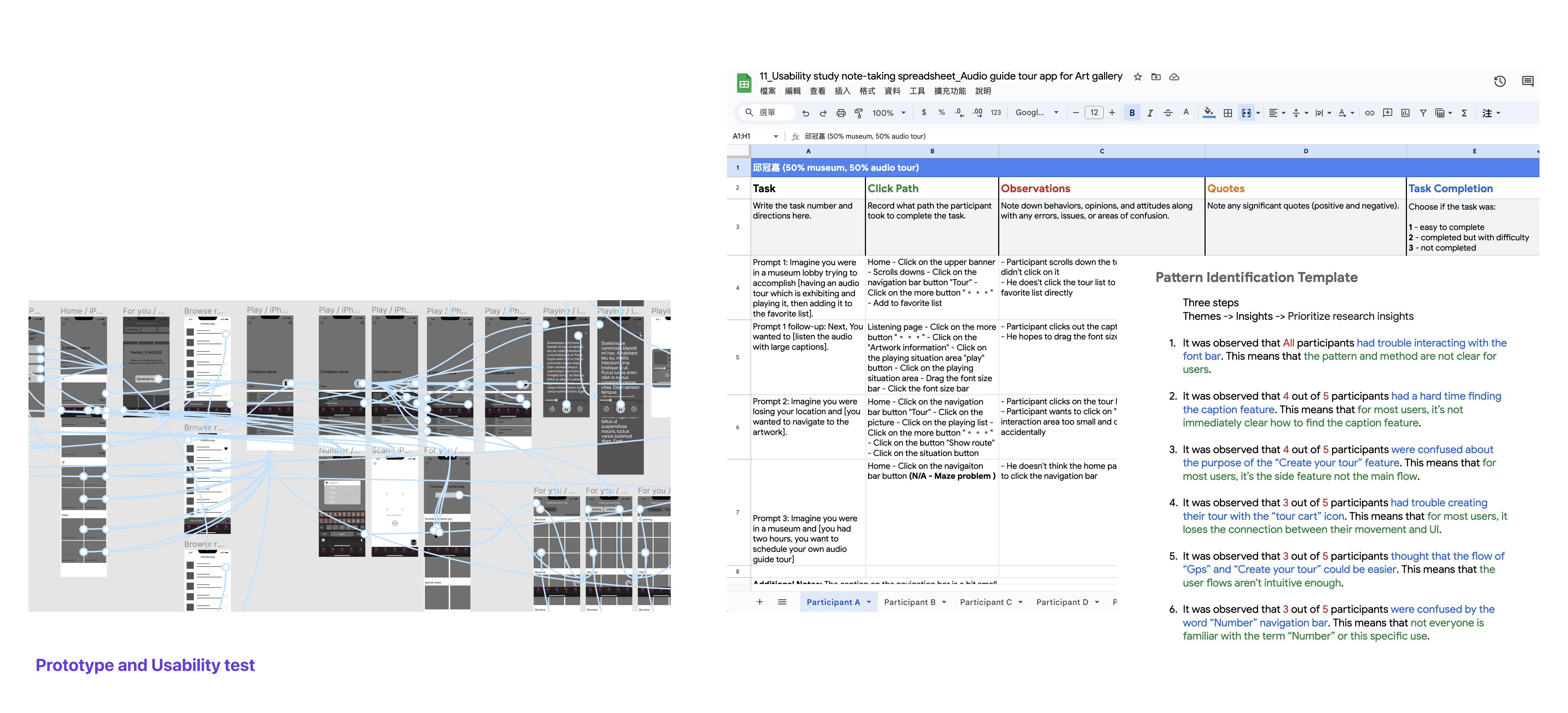Context
3 months
Museum of Contemporary Art, Taipei (MoCA)
Research
UX Design
UI Design
Usability Test
Yit (Design & Research)
Background
The "Museum Inclusion Promotion Plan" is an initiative aimed at making museums more inclusive and accessible to a diverse range of visitors, regardless of their background, abilities, or interests. It focuses on ensuring that everyone can fully enjoy and participate in the museum experience.
It is divided into two parts:
Phase 1. Designing and establishing a chatbot to integrate crucial museum information.
Phase 2. Conducting research and providing optimization proposals for the audio guide.
Phase 1. AI Chatbot outcome
Decreased the number of customer service calls by 30%
Improved the museum's digital experience satisfactory rate by 24%
Prompted other art museums to start using Chatbot systems
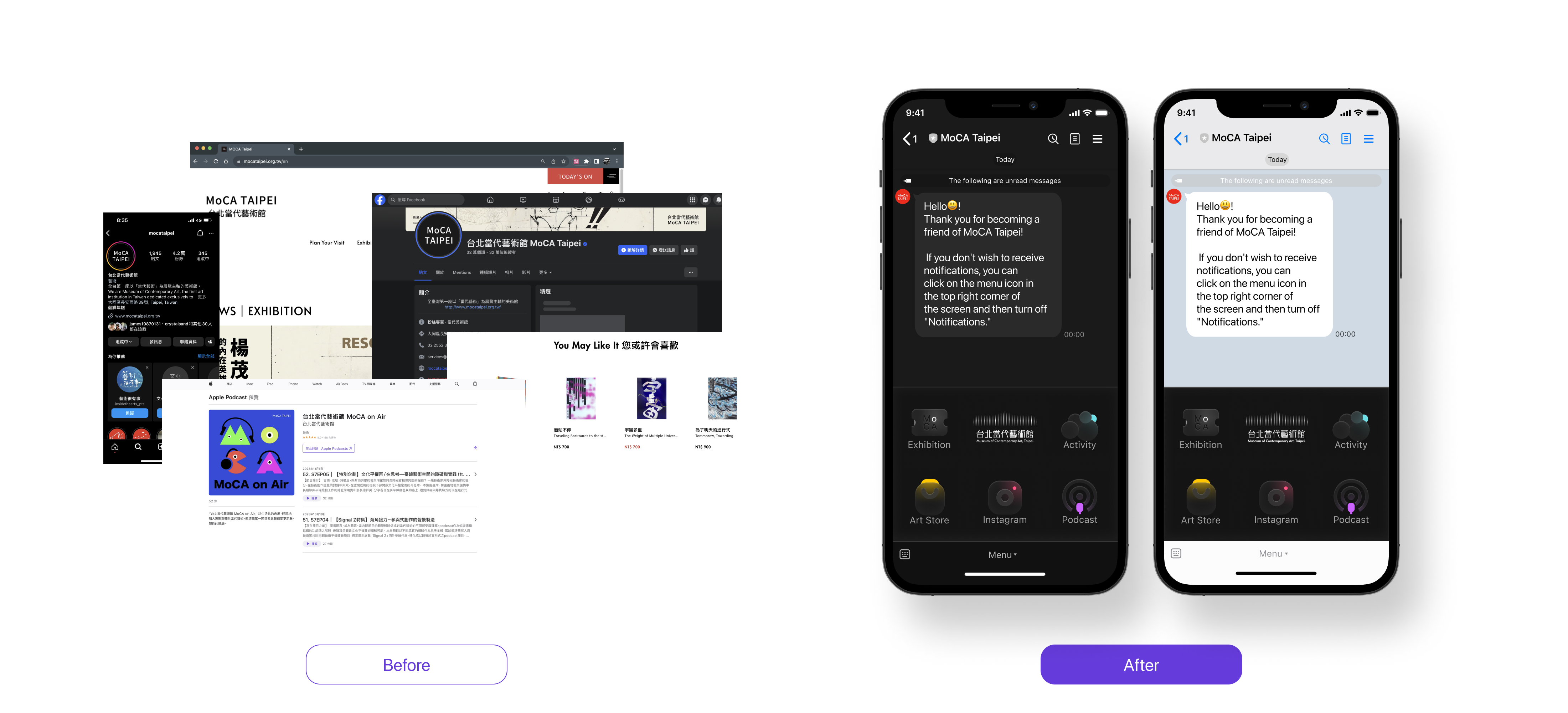
Design Process
Survey and Functional planning
Utilizing the survey data as a foundation for user profiles and aligning it with business requirements and product vision to outline the core product functionalities.

Wireframe and layout
Experimenting with various layout versions and collaborating with colleagues in the Marketing department to prioritize product functionalities.

UI Flow
Using a multi-page function to efficiently deliver essential information and prevent users from being directed to pages with excessive text content.
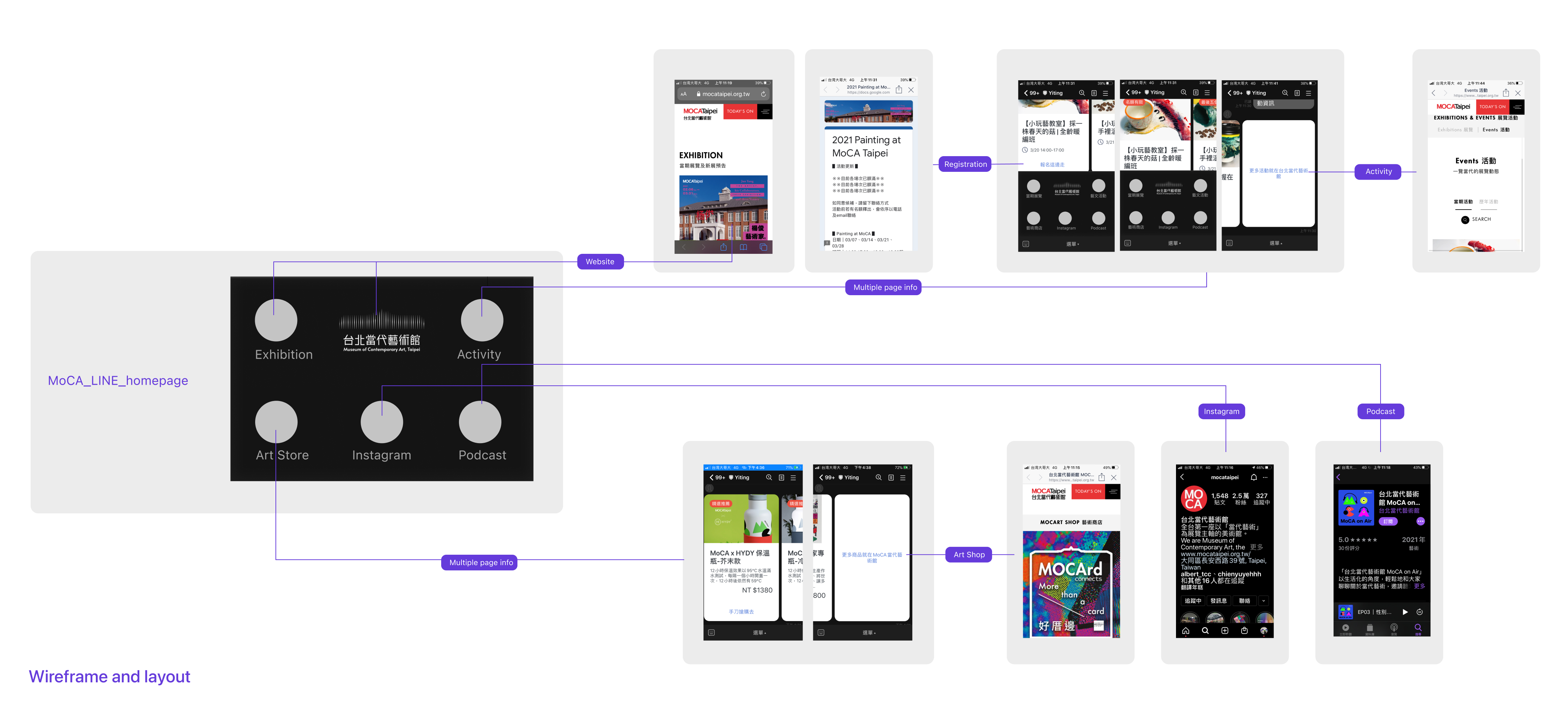
Phase 2. Audio guide research outcome
Conducted an extensive user research study encompassing audio guide usage in prominent art venues in Taiwan and around the world
Resulted in 5 critical discoveries, 3 core design goals, and 4 innovative design solutions

Design Process
Competitive product analysis
I conducted a comprehensive competitor analysis for both direct and indirect competitors. Evaluated them based on aspects such as the museum's operational focus, interactivity, visual design, and more.
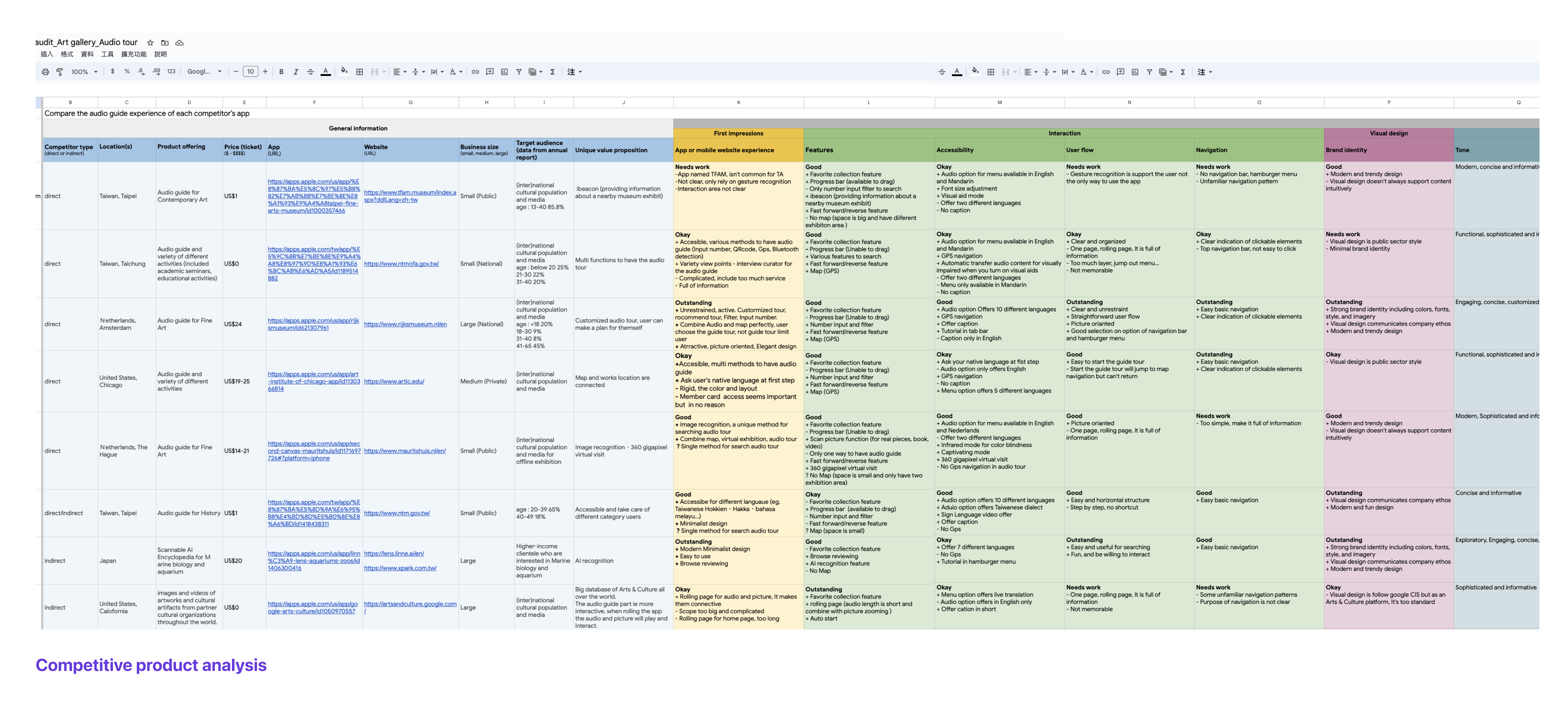
Wireframe and user journey
Subsequently, I defined the primary users as art enthusiasts and art professionals, and tailored the product's key pathways and user journeys to meet their specific needs.
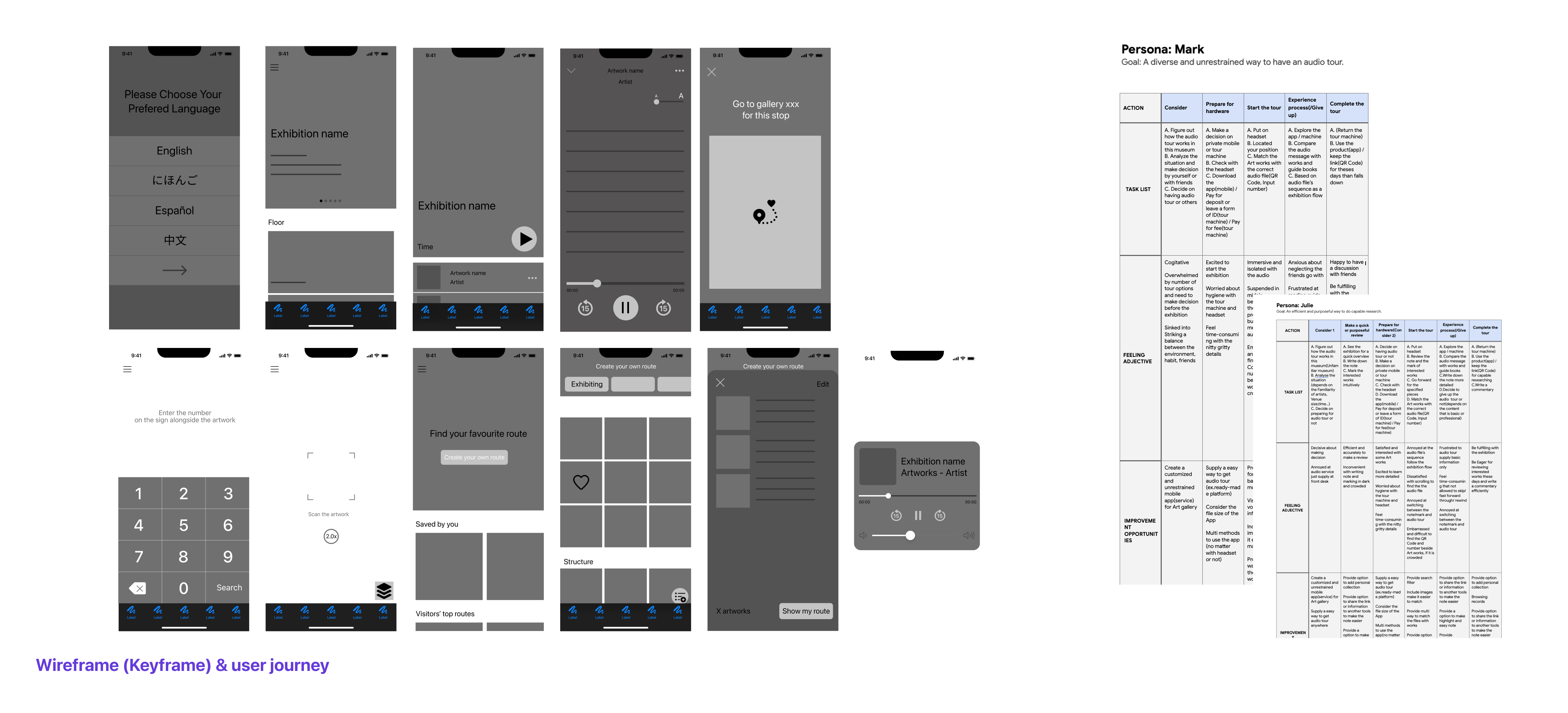
User interview and key frame adjustment
I also interviewed both primary customer groups to validate whether the previous user journeys align with the actual expectations of users, and made adjustments based on their feedback.
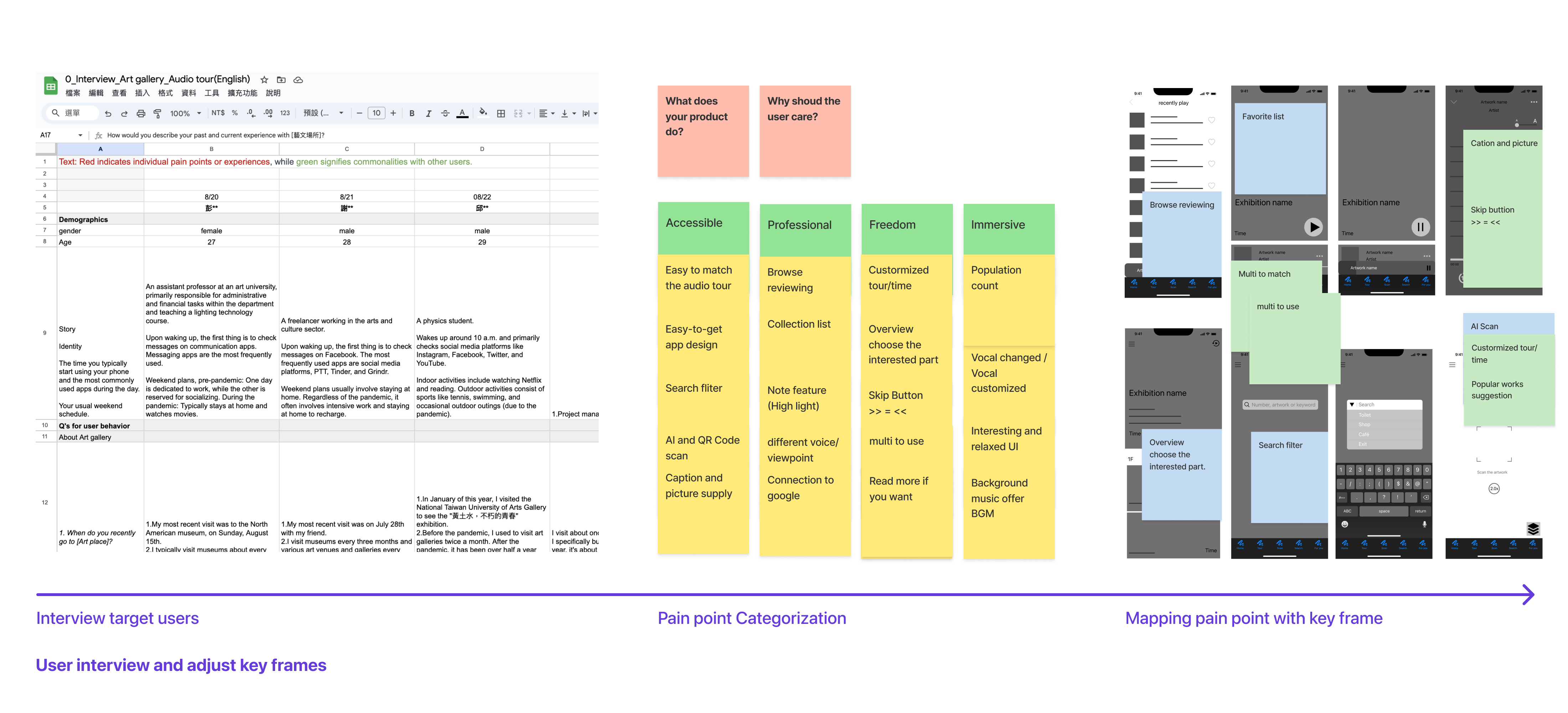
Prototype and usability test
Lastly, I developed a prototype with essential features and conducted usability tests with five users.
